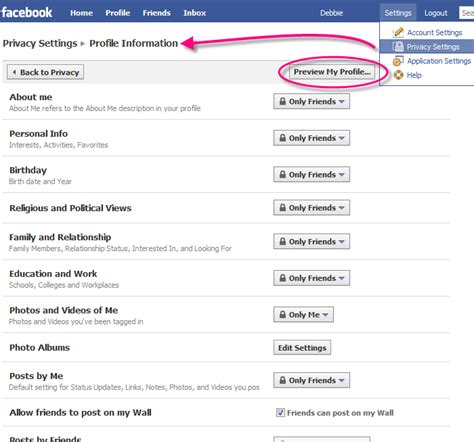How to Make Your Facebook Profile More Private: A Comprehensive Guide
Facebook, while a powerful tool for connection, also presents privacy concerns. This guide will walk you through the steps to significantly enhance your Facebook privacy settings, helping you control who sees your information. Remember, complete privacy is virtually impossible on any social media platform, but taking these steps will drastically reduce your public footprint.
Understanding Facebook's Privacy Settings
Before diving into the specifics, it's crucial to understand that Facebook's privacy settings are layered. Different aspects of your profile – posts, photos, friends list, etc. – have individual privacy controls. You need to adjust each one to achieve the desired level of privacy.
Step-by-Step Guide to a More Private Facebook Profile
This guide focuses on the most important settings to adjust for increased privacy:
1. Review Your Profile Information
What to do: Go through your "About" section, carefully reviewing the information you've shared. Consider removing potentially sensitive information such as your exact address, birthday (you can still celebrate it!), workplace (if not relevant to your connections), phone number, and email address.
Why it matters: Publicly available information can be used for identity theft or unwanted contact. Limiting this information is a crucial first step.
2. Control Who Can See Your Posts
What to do: Navigate to your Facebook settings and privacy section. Look for "Privacy Shortcuts" or similar. Here, you can adjust who can see your future posts (Friends, Friends of Friends, Only Me). You can also go back and adjust the audience of previous posts individually.
Why it matters: This is the single most important setting for controlling what others see.
3. Manage Your Friends List
What to do: Review your friends list regularly. Remove anyone you don't know well or trust. Remember, your friends can see each other’s profiles and posts.
Why it matters: Limiting the number of people who have access to your information reduces the potential for data breaches or unwanted exposure.
4. Adjust Tagging Settings
What to do: Control who can post on your timeline, and review tagging options. You can choose to review tags before they appear on your profile, giving you control over what is visible.
Why it matters: This prevents unwanted photos or posts from appearing on your profile without your consent.
5. Limit Who Can Contact You
What to do: Go to your settings and adjust who can send you friend requests, messages, etc. You might want to restrict these to friends only.
Why it matters: This reduces unwanted messages and prevents strangers from contacting you.
6. Review Your Apps and Websites
What to do: Facebook connects to many third-party apps and websites. Review which apps have access to your information and revoke access from those you no longer use or trust.
Why it matters: Many apps collect data, and limiting access protects your information.
7. Control Activity Logging
What to do: Facebook keeps a record of your activity. While helpful for managing your account, it’s worth regularly reviewing and potentially deleting.
Why it matters: This prevents unwanted tracking of your online behavior.
Going Beyond Basic Settings: Advanced Privacy Tips
- Use strong passwords: Protect your account with a unique, complex password.
- Enable two-factor authentication: This adds an extra layer of security.
- Be mindful of what you share: Think twice before posting anything sensitive online.
- Regularly review your privacy settings: Facebook updates its settings, so regular checks are essential.
By consistently following these steps and staying informed about Facebook's privacy updates, you can significantly enhance your online security and maintain a more private Facebook experience. Remember, protecting your information is an ongoing process.
